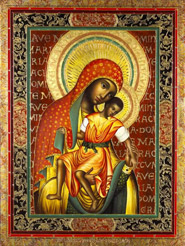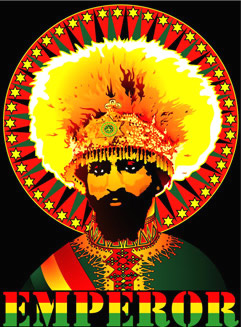HISTORY REWARDS ALL THE OTHER STUDIES
Historically the Black race has suffered many forms of oppression which range from outright exploitations in economic terms to degradation of dignity in via the slave trade, engineered epidemics to engineered wars the list goes on.
Heritage Africa provides a sense of identity, racial pride and status by uniting the Africans at home and abroad as one and the same race with the same cultural background and heritage.
Religion has undergone drastic suppression in recent years, this aspect of Chiga life will have to be described in rather bare outline. Although the British ban was actually directed against one particular cult, the cult of Nyabingi, the Chiga have interpreted it as a general one. The result is that no one dares to wear the most ordinary charms; ghost huts have disappeared; diviners are no longer openly consulted; and religious and magical practitioners have laid aside their spirit 'horns'--though they may continue to cherish and even to feed them in private. My information had therefore to be dug piecemeal from informants who were either poorly informed or reluctant and suspicious. Ceremonies I witnessed were versions put on for my benefit, just to show me 'how we used to do it'. The basic formal features are, I think, fairly clear; but their functional significance is not always so evident. The general picture that emerges from the information I was able to obtain is a familiar African one, but, like Chiga institutions generally, rather less formalized. For the Chiga, the universe normally goes on in a more or less smooth routine way.It is vaguely conceived of as ordered by a remote high god. But it is also infested with a great many different types of spirits who interfere with its normal functioning--and always for the worse.There are ghosts of recently departed ancestors who trouble their own descendants and make them ill, and there are various other malevolent spirits which work through human familiars, smiting them, their kinsmen, and even strangers with all sorts of horrid afflictions. All these spirits are arbitrary and cannot be kept in order by systematic ritual. They must constantly be placated by offerings which are made whenever they start to cause trouble. It is the function of the diviner to determine which of these various powers is causing or threatening evil, so that appropriate offerings can be made.
THE NYABINGI BREIF HISTORY
The term Nyabingi was first used to describe an East African possession cult located in the areas of south Uganda and north Rwanda in 1700 AD (Hopkins 259). Early missionaries and anthropologists named the Uganda/Rwanda clans, the Nyabingi Cult, because their culture was based on the veneration of the goddess spirit, Nyabingi. The Nyabingi Cult is said to have thrived due to the possession of the goddess Nyabingi through dance and religious séances.
Various oral traditions exist that explain how Nyabingi became a revered goddess. One account states that in 1700 AD two tribes inhabited the Uganda/Rwanda area: the Shambo and Bgeishekatwa. Queen Kitami, who is said to have possessed a sacred drum of phenomenal power, ruled the Bgeishekatwa tribe. When Kitami died she was given immortal status and the name Nyabingi (Freedman 63). Another tradition states that Queen Nyabingi ruled the Northwestern Tanzani kingdom of Karagwe and married the chief of Mpororo from the southwestern kingdom of Uganda. Envious of the Queen's power, the ruler ordered her death which is said to have brought untold horrors to his kingdom (Kiyaga-Mulindwa 1163). After her death, her spirit continued to be praised and to possess her followers for the next two centuries.
The Bgeishekatwa tribe was eventually defeated by the Shambo clan who adopted the Bgeishekatwa's rituals for Nyabingi. A century later the Shambo were defeated by the cultivating Kiga clan (there are legends that the Shambo's defeat is connected to the attempt to kill a woman who was possessed by Nyabingi) (Freedman 74). Once the Kiga tribe reigned over the land, Nyabingi became known as a matriarchal power, and the Kiga's century-rule is characterized as the reign of the Nyabingi priestesses.
Kiga women who received Nyabingi's blessings and were said to be possessed by Nyabingi came to be called bagirwas (Hopkins 259). Eventually the revered bagirwas gained political dominion and became governors of the Kiga people living a dual life of political and spiritual leadership. The bagirwas, including Muhumusa, remained governors of the Kiga people until 1930 after losing their land to British, German, and Belgian imperialists, which they fought for a period of twenty years. At some point, men became Nyabingi priests as well (Freedman 80-81).
The Nyabingi Theocracy Government was named for a legendary Amazon queen of the same name, who was said to have possessed a Ugandan woman named Muhumusa in the 19th century. Muhumusa inspired a movement, rebelling against African colonial authorities. Though she was captured in 1913, alleged possessions by "Nyabingi" continued, mostly afflicting women.
Nyabingi music
The Nyabingi resistance inspired a number of Jamaican Rastas, who incorporated what are known as niyabinghi chants (also binghi) into their celebrations ("grounations"). The rhythms of these chants were eventually an influence of popular ska, rocksteady and reggae music. Three kinds of drums (called "harps") are used in niyabinghi: bass, also known as the "Pope Smasher" or "Vatican Basher", reflecting a Rasta association between Catholicism and Babylon, the middle-pitched funde and akete. The akete (also known as the "repeater") plays an improvised syncopation, the funde plays a regular one-two beat and the bass drum strikes loudly on the first beat, and softly on the third beat (of four). When groups of players get together, only one akete player may play at any one time. The other drums keep regular rhythms while the akete players solo in the form of a conversation. Count Ossie was the first to record Nyabingi, and he helped to establish and maintain Rastafarai culture.
Nyabingi drumming is not exclusive to the Nyabingi order, and is common to all Rastafarians. Its rhythms are the basis of Reggae music, through the influential ska band, the Skatalites. It is said that their drummer revolutionized Jamaican music by combining the various Nyabingi parts into a 'complete' "drum kit," which combined with jazz to create an entirely new form of music, known as ska. Nyabingi rhythms were largely a creation of Count Ossie, who incorporated influences from traditional Jamaican Kumina drumming (especially the form of the drums themselves) with songs and rhythms learned from the recordings of Nigerian musician Babatunde Olatunji.
Binghi chanting typically includes recitation of the Psalms, but may also include variations of well-known Christian hymns. Though Count Ossie is clearly the most influential Binghi drummer, practically the thing inventing the genre of something in its present state, the recordings of Ras Michael and the Sons of Negus, as well as the Rastafarai Elders, have contributed to the popularity of the music.
Though Nyabingi music operates as a form of Rasta religious music outside of Reggae, musicians such as Bob Marley and even non-Rastas such Prince Buster and Jimmy Cliff (both Muslim) used the idiom in some songs. Recently, dancehall sensation Sizzla, American roots-Reggae artists such as Groundation and Jah Levi, and Hip hop have used Nyabingi drums extensively in their recordings. Though sometimes claimed to be a direct continuation of an African cultural form, Nyabingi drumming is best seen as the voice of a people rediscovering their African roots.
Combining Jamaican traditions with newly acquired African ones, Count Ossie and others synthesized his country's African traditions and reinvigorated them with the influences of Nigerian master-drummer Babatunde Olatunji, as a comparison of Count Ossie's Tales of Mozambique and Olatunji's earlier Drums of Passion will reveal. Indeed, it is that combination of inherited traditions and conscious rediscovery of lost African traditions that makes Nyabingi drumming and Rastaso powerful.
Nyabingi are considered the strictest mansion of the Rastafarai movement in Jamaica preaching the ideals of a global theocracy to be headed by Emperor Haile Selassie I, whom they proclaim to be the promised Messiah and incarnation of the Supreme

RASTA HOLYDAYS CALENDAR AVAILABLE
NB: Primary source: Elizabeth Hopkins, “The Nyabingi Cult of Southwestern Uganda”and
Protest and Power in Black Africa, ed. Robert Rotberg and Ali Mazrui, New York: Oxford, 1970
| Copy Rights HeritageAfrica.info |


